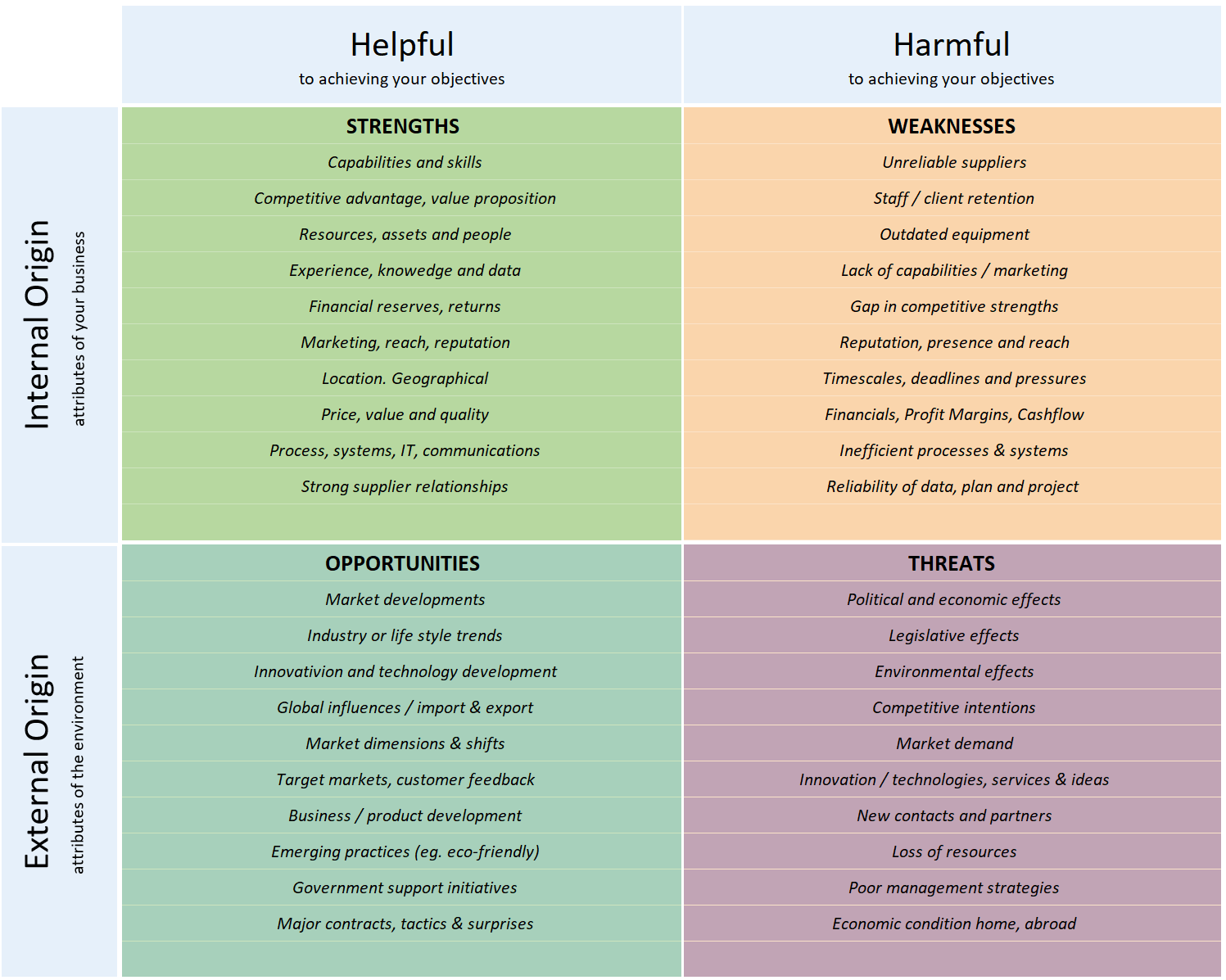Why every small business owner needs to develop a SWOT analysis as part of your strategic plan.
A SWOT analysis is a strategic planning tool
used to assess the strengths, weaknesses, opportunities and threats of your business.
Developing a SWOT analysis can help you look at your business in a new way and from different directions. It can also help you to:
- create or fine tune your business strategy
- prioritise areas for business growth to achieve your business goals.

Complete your SWOT analysis
You can start the process by gathering a group of employees or advisors who have different perspectives on your business. If you don’t have
employees, you can ask family members, business advisors or mentors. The key is to have different points of view.
Using the prompting questions below as a guide, you can conduct a brainstorming session to discuss ideas about each SWOT category. After
brainstorming, create a final prioritised list of points in your SWOT analysis. List the factors in each category from highest to
lowest priority.
Consider your strengths
Strengths are internal, positive parts of your business. These are things that are within your control. Ask yourself:
- What do we do well?
- What do we do better than our competition?
-
What unique assets do we have internally (such as knowledge, background, network, reputation or skills) and externally (such as customers,
patents, technology or capital)?
- What positive aspects of the business give us a competitive advantage?
Consider your weaknesses
Weaknesses are internal, negative factors. These are things that you might need to improve on to be competitive. Ask yourself:
- What and where can we improve?
- What do our competitors do better?
- Where are the gaps in our assets and resources (such as knowledge, cash or equipment)?
- Is the thing that sets us apart from our competition obvious?
- How can we improve business processes?
Consider your opportunities
Opportunities are external, positive factors that may give a competitive advantage and contribute to success. Ask yourself:
- What trends can we use to our advantage to increase use of our product or service?
-
Are there any changes or events that might positively impact us (such as consumer behaviour, regulation, policies or new technology)?
- Has anything changed in the market that creates opportunity for us?
- Do the public like us?
Consider your threats
Threats include external factors beyond your control that may put your business at risk. Consider putting in place contingency plans for
dealing with them if they occur. Ask yourself:
- What factors beyond our control could place us at risk?
- What potential competitors may enter the market?
- Are our resource and material supplies unstable or insecure?
-
Are there any changes or events that might negatively impact us (such as consumer behaviour, regulation, policies or new technology)?
Use your SWOT analysis
Once you have completed your SWOT analysis, it can be used to develop strategies for achieving your business goals. You can create a
strategic plan to continue building on your strengths while improving on your weaknesses. When using your SWOT analysis to create a
strategy, ask yourself:
- How can we use our strengths to take advantage of our opportunities?
- How can we use our strengths to minimise our threats?
- What do we need to do to overcome and minimise our identified weaknesses?
For more information, visit the
Australian
Government Business website.
Ref: https://business.gov.au/planning/business-plans/swot-analysis
